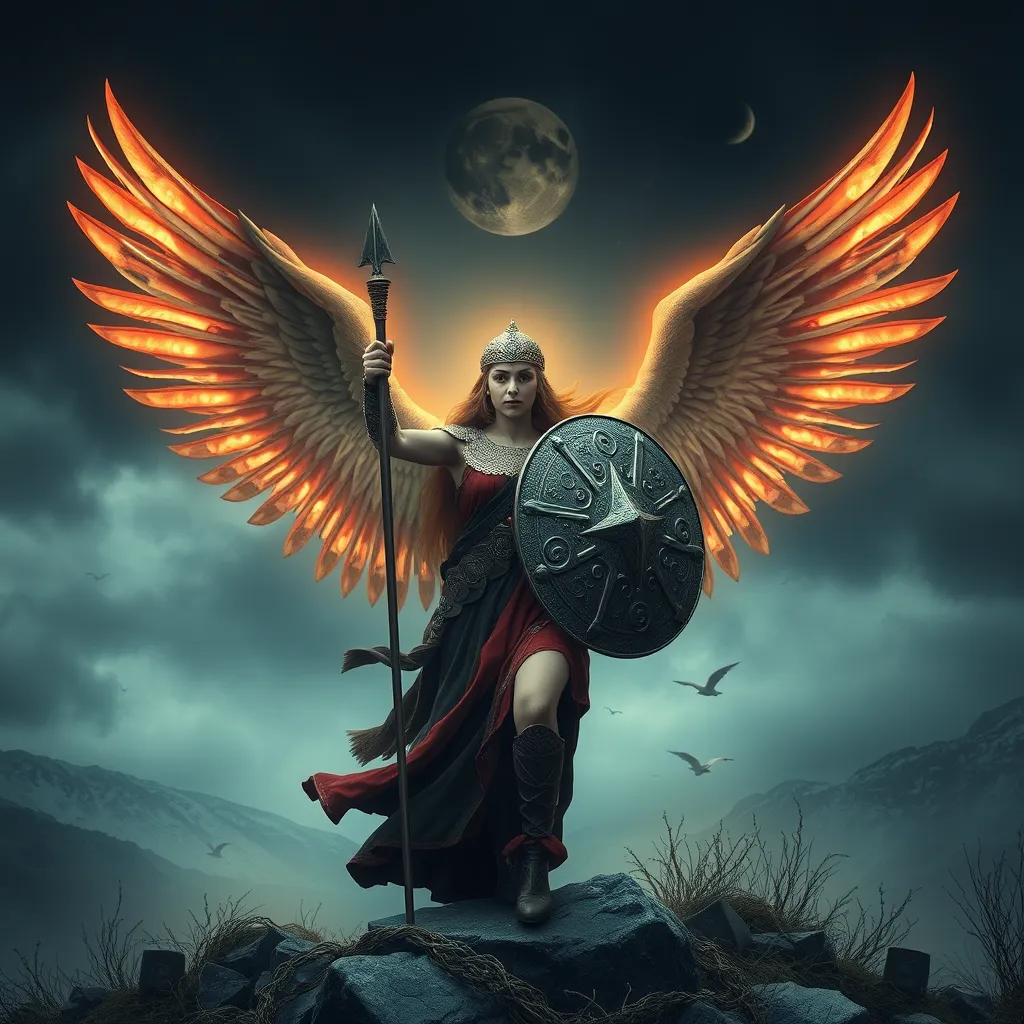Valkyries and the Pagan Revival: Exploring the Modern Interest in the Shield Maidens
I. Introduction
The Valkyries, formidable figures in Norse mythology, are often depicted as warrior maidens who serve Odin, the chief of the gods. Their primary role is to choose those who may die and those who may live in battles, guiding the souls of slain warriors to Valhalla. This powerful imagery has resonated through the ages, particularly in contemporary culture.
Simultaneously, the Pagan Revival has emerged as a significant cultural phenomenon, reflecting a renewed interest in ancient spiritual practices and mythologies. This revival has fostered a deeper appreciation for figures like the Valkyries, who embody strength, bravery, and the warrior spirit.
This article aims to explore the modern interest in Valkyries, examining their historical context, their role in the Pagan Revival, and their significance as symbols of empowerment in today’s world.
II. Historical Context of Valkyries
The origins of Valkyries can be traced back to the earliest Norse texts, where they are described as divine beings, tasked with selecting those worthy of entering Valhalla. They are often portrayed in battle, riding swift horses and wearing armor, representing both death and valor.
Valkyries symbolize female empowerment and the warrior spirit, challenging traditional gender roles in ancient societies. In a time when women were typically relegated to domestic duties, these shield maidens stood as powerful figures capable of influencing the fate of warriors.
Depictions of Valkyries can be found in various ancient texts, such as the Poetic Edda and the Prose Edda, as well as in Viking Age art, which frequently illustrates their dual nature as both life-givers and death-bringers.
III. The Pagan Revival: A Resurgence of Interest
The Pagan Revival, which gained momentum in the late 20th century, is characterized by a growing interest in pre-Christian traditions, rituals, and spiritual practices. This movement has seen a resurgence of ancient deities and mythological figures, including the Valkyries.
Key figures in the Pagan Revival, such as Gerald Gardner and Raymond Buckland, have played crucial roles in promoting these ancient beliefs. Organizations like the Pagan Federation and various heathen communities have furthered this resurgence, creating spaces for individuals to explore and practice these traditions.
In contemporary Pagan practices, Valkyries hold a significant place, often invoked in rituals celebrating strength, courage, and the warrior spirit. They are seen as protectors and guides, embodying the fierce independence valued in modern spirituality.
IV. Valkyries as Symbols of Feminism
In feminist discourse, Valkyries represent strong female archetypes who defy traditional norms. Their image as powerful, independent warriors resonates with contemporary ideals of feminism, celebrating women who take control of their destinies.
- Valkyries challenge the stereotype of passive femininity.
- They embody qualities such as bravery, strength, and agency.
- Their narratives often center around choice and empowerment.
Modern feminist literature and art often draw on the imagery of Valkyries, reinterpreting their stories to reflect current struggles and triumphs. This reimagining emphasizes their relevance in discussions about gender equality and women’s rights.
V. Valkyries in Popular Culture
The representation of Valkyries has permeated popular culture, appearing in films, television, and literature. Notable examples include:
- The Marvel Cinematic Universe, where Valkyrie is portrayed as a key character in “Thor: Ragnarok.”
- TV series such as “Vikings,” which highlights the role of Valkyries in Norse culture.
- Literary works like “The Witcher” series, which incorporates Valkyrie-like figures.
Video games have also played a significant role in shaping the modern image of Valkyries. Titles such as “God of War” and “Assassin’s Creed Valhalla” feature Valkyries as powerful adversaries or allies, further embedding these figures in contemporary mythology.
The commercialization of Valkyrie imagery has led to a plethora of merchandise, from clothing to collectibles, reflecting society’s fascination with these warrior maidens and their enduring appeal.
VI. Modern Worship and Practices
In contemporary Paganism, rituals and ceremonies honoring Valkyries have become increasingly popular. These may include:
- Rituals invoking Valkyries for protection and guidance in battle.
- Community gatherings celebrating the warrior spirit among women.
- Personal spiritual practices integrating Valkyrie symbolism, such as crafting altars dedicated to them.
Online platforms and social media groups have also emerged, connecting Valkyrie enthusiasts and practitioners. These spaces serve as forums for sharing rituals, artwork, and discussions about the role of Valkyries in contemporary spirituality.
VII. Critiques and Controversies
Despite the growing interest in Valkyries, the movement is not without its critiques. Issues of cultural appropriation arise as elements of Norse mythology are commercialized and misrepresented. Critics argue that this can overshadow the authentic cultural significance of these figures.
Within the Pagan community, debates exist regarding the portrayal of Valkyries. Some argue for a more traditional interpretation, while others advocate for modern reinterpretations that reflect contemporary values. This tension highlights the challenge of maintaining authenticity in modern interpretations of ancient myths.
VIII. Conclusion
The enduring fascination with Valkyries speaks to their powerful symbolism in both ancient and modern contexts. As figures of strength and empowerment, they resonate deeply in today’s cultural landscape, inspiring individuals to embrace their warrior spirit.
As the Pagan Revival continues to grow, Valkyries will likely remain central figures in contemporary spiritual practices and popular culture. Their relevance is a testament to the timeless appeal of strong female archetypes, ensuring that the legacy of the Valkyries will endure for generations to come.
https://www.youtube.com/watch?v=bgtBkFMfld0



